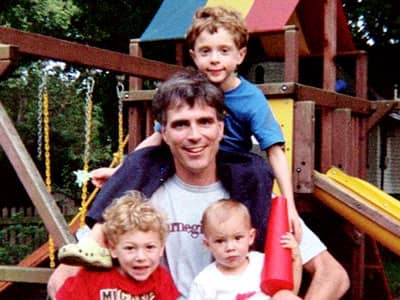
One December 12 years ago, Jill Bolte Taylor, a neuroanatomist--a doctor who studies the structure of the human brain--awoke to discover she had suffered a hemorrhage in the left half of her brain. Her first thought was, "Oh, my God, I am having a stroke." Her second was, "This is so cool."
Taylor, then only 37, found herself in the unique position of experiencing her stroke both as a patient and as a scientist. In its aftermath, while unable to speak, walk, or recognize her mother, she could not escape an overriding sense of profound peace and a sense that every atom in her body was connected to all other atoms in the universe.
"As the hemorrhaging blood interrupted the normal functioning of my left mind, my perception was released from its attachment to categorization and detail," she writes in My Stroke of Insight: A Brain Scientist's Personal Journey, her best-selling book about her experience, which was published this year. "I'm no authority, but I think the Buddhists would say I entered the mode of existence they call Nirvana."
Taylor is nominated as one of Beliefnet's Most Inspiring People of the Year for being able to see her stroke not as a disability but as a gift. It is now her mission to share what her stroke taught her about the body, the mind, and how we may be connected to the divine.
"I was prepared to watch my own brain deteriorate because it was my area of expertise," Taylor told Beliefnet. "I got to watch it through the eyes of a curious scientist instead of a freaking out human being. And I don't think it could have happened to a nicer girl. I feel very fortunate to have had this experience."
Recovering from her stroke was a long, multi-year process. But again, Taylor turned her scientist's mind to the task as she worked to selectively refocus her brain away from the more judgmental and analytical left side in favor of the more creative, spiritually focused right side. It is a process, she says, that anyone can use to bring themselves into a more balanced, unified, and nurturing relationship with the rest of the world and what she refers to as "the Great Spirit."
"I want people to realize we are hardwired for being at one with all that is, for being at that level of connectedness," Taylor said. "And I thought that, by connecting this experience with brain science, I would open up a whole new possibility for people who are uncomfortable with faith to see themselves in terms of this, quote, spirituality."
She now travels the world, giving talks on her stroke and how she came back a stronger, more spiritual person. One of these talks, at the Technology, Entertainment, Design (TED) conference, was posted online and turned viral. Taylor soon found herself flooded with calls, emails, and letters from stroke victims, caregivers, and others who found her words an inspiration. She now travels and talks around the world.
"This is the gift--the fact that a neuroanatomist had a stroke, was privileged to recover, and can say this is the wisdom that I have brought back," she said.
When home in Indiana, Taylor works on the "Visually Directed Intention Project,” a medical device that will combine virtual reality with gaming and modern technology to help people recover from neurological trauma.
"This project is the way I give back to the people who are experiencing what I experienced," she said.

